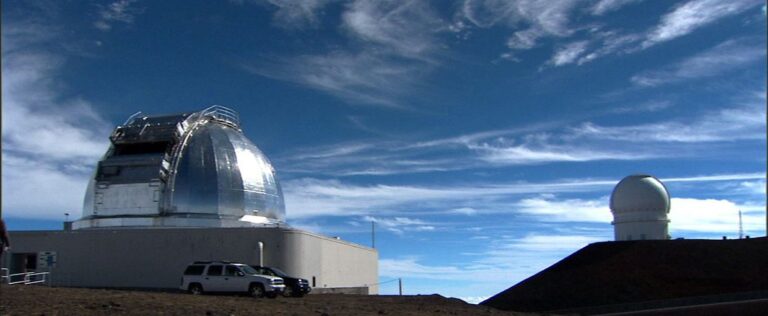NASA’s Institute for Advanced Concepts (NIAC) has initiated a bold project that aims to expand the boundaries of astrophysics and solve the cosmic mysteries of the early Universe. Lead by Davide Guzzetti at Auburn, the project is creating a radio telescope of never-before-seen size, able to deploy its complex web of radio antennas in space itself. The technological cornerstone of this endeavor is the use of self-folding smart polymers, which are engineered to unfold in a precise spiral pattern, creating a kilometer-scale apparatus for celestial observation.
The primary goal of this space-bound behemoth is to locate the elusive 21-cm signal, a faint celestial melody that emanates from primordial hydrogen and is a whisper from the early universe. This faint signal is essential to understanding the mysterious period that followed the Big Bang and preceded the cosmic milestone known as the Era of Reionization. However, from Earth, capturing this signal is difficult because of the ionosphere and the widespread radio emissions caused by human activity.
Conventional methods to circumvent these land-based obstacles have included designs for a lunar telescope or a constellation of separate space-based observatories; however, these ideas either require complex lunar infrastructure or struggle with the challenge of sustaining a stable formation of isolated telescopes in the vastness of space; in contrast, the NIAC-funded project presents a novel solution that combines the intelligence of smart materials with the accuracy of interferometry, thereby eliminating the need for either complex lunar construction or complex positioning algorithms.
The “ink hinges,” which are the central component of the telescope’s deployment strategy, are carefully engineered to fold at specific temperatures. When exposed to the sun’s warmth, these hinges activate, causing the antennas to gracefully splay into their intended spiral configuration. This clever mechanism—which was described in a 2021 paper—represents a significant advancement in space exploration technology, though details about the project’s future phases are still unknown. Although the smart polymers have a wide range of potential applications, the idea of a massive space telescope is still captivating the scientific community.
NASA is exploring space beyond theory with its Fermi Gamma Ray Space Telescope, which orbits our planet and never stops searching the sky for gamma radiation from cosmic phenomena like pulsars, supernova remnants, and blazar galaxies. This international collaboration is a prime example of NASA’s spirit of international cooperation in space exploration. At the same time, NASA is improving its deep space communication capabilities with the Deep Space Optical Communications (DSOC) project.Recent groundbreaking developments signal a new era of interplanetary communication, essential for the success of manned missions to Mars and beyond. A video was recently beam back to Earth from an unprecedented distance of 31 million kilometers, transmitted at a blistering bit rate of 267 Mbps.
The James Webb Space Telescope, which was launched on Christmas Day 2021, is a new addition to NASA’s fleet of celestial sentinels. It has already provided humanity with amazing images and data, revealing cosmic secrets spanning the span of cosmic history. These initial observations, which were chosen cooperatively by representatives of multiple space agencies, showcase the capabilities of Webb’s cutting-edge scientific instruments, solidifying its position as the world’s preeminent space science observatory.
As the curtain rises on these cosmic dramas, it is evident that NASA’s cutting-edge projects—like the kilometer-scale radio telescope developed by the NIAC or the breakthroughs in communication achieved by the DSOC—are shaping a future in which the mysteries of the universe will be within our reach. The expedition to detect the 21-cm signal, while still fraught with uncertainty, is a monument to human curiosity and our unwavering quest to learn more about our place in the universe.

